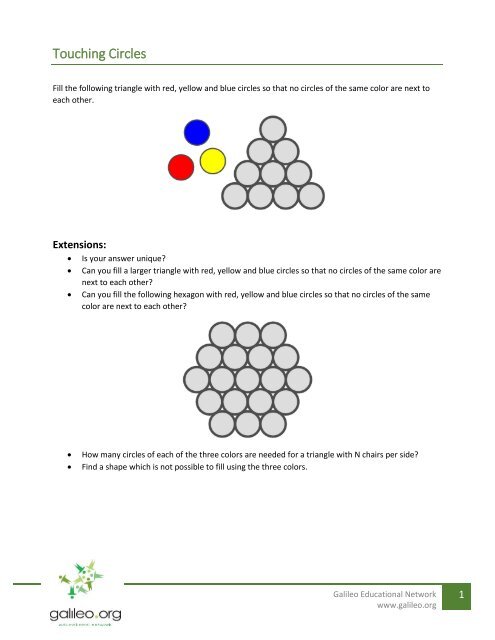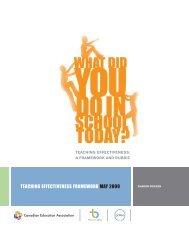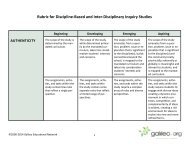Touching Circles - Galileo Educational Network
Touching Circles - Galileo Educational Network
Touching Circles - Galileo Educational Network
Create successful ePaper yourself
Turn your PDF publications into a flip-book with our unique Google optimized e-Paper software.
<strong>Touching</strong> <strong>Circles</strong><br />
Fill the following triangle with red, yellow and blue circles so that no circles of the same color are next to<br />
each other.<br />
Extensions:<br />
<br />
<br />
<br />
Is your answer unique?<br />
Can you fill a larger triangle with red, yellow and blue circles so that no circles of the same color are<br />
next to each other?<br />
Can you fill the following hexagon with red, yellow and blue circles so that no circles of the same<br />
color are next to each other?<br />
<br />
<br />
How many circles of each of the three colors are needed for a triangle with N chairs per side?<br />
Find a shape which is not possible to fill using the three colors.<br />
<strong>Galileo</strong> <strong>Educational</strong> <strong>Network</strong><br />
www.galileo.org<br />
1
Mathew, Desirée and Cade of Alice M. Curtis Campus ask you to fill the following square with four<br />
colors, so that no connected circles share the same color.<br />
<br />
Can four colors also be used to fill this triangle? (Remember, no connected circles can share the<br />
same color.)<br />
<strong>Galileo</strong> <strong>Educational</strong> <strong>Network</strong><br />
www.galileo.org<br />
2
Two person game:<br />
Each player takes turns tossing a circles into the small hexagon below. A player may not toss a circle so that<br />
two touch that have the same colour. The winner is the last player able to move.<br />
Same idea with a terrestrial theme...<br />
Colour the bunny rabbits... the same idea again...<br />
The Math in This Problem:<br />
Using red, blue, and yellow circles, students are challenged to fill in various shapes made up of circle units.<br />
The test of <strong>Touching</strong> <strong>Circles</strong> is to not have a circle next to another one of the same colour. Since the<br />
different colours can be applied one by one, this makes for a fun two-player game, with the winner being<br />
the last one able to make a move.<br />
<strong>Galileo</strong> <strong>Educational</strong> <strong>Network</strong><br />
www.galileo.org<br />
3








